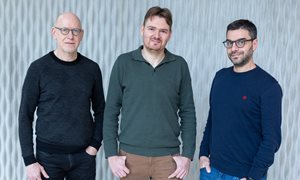
A new measurement on cardiac ultrasound in childhood cancer survivors provides more accurate information about possible cardiac dysfunction. This method measures the contraction of the myocardium rather than the ejected? volume of blood. This may allow doctors to detect possible heart failure earlier. This is according to a study of 1,400 adults, now published in JACC CardioOncology.
Childhood cancer survivors are known to have an increased risk of cardiovascular disease later in life, even decades after treatment. In particular, heart failure is a known long-term effect after treatment with certain chemotherapy or radiotherapy. These survivors remain under long-term hospital control at the Late Effects outpatient clinic, during which they receive, among other things, an ultrasound of the heart to visualize cardiac function.
The possibilities of ultrasound have recently expanded. In this study, researchers not only recorded cardiac function in the now-common way, determining the ejected volume of blood, but also measured the shortening of the myocardium. This is a less error-prone measurement, in which the computer tracks the myocardium through a single heartbeat and plots the shortening during contraction. Radboud university medical center uses this method routinely in adults during chemotherapy because it allows early detection of mild heart failure and functional abnormalities.
The researchers now show that this method is also suitable for childhood cancer survivors. PhD candidate and first author Remy Merkx: "We get a more accurate picture using global longitudinal strain, because we can visualize an early degree of impaired shortening of the heart muscle during contraction. Especially in people who have had chest radiotherapy in the past, we see that this shortening measurement is more often abnormal, while the volume measurement remains normal. In this population, this method may be better for detecting heart failure.'
For now, the researchers will continue to perform this measurement in research settings. Merkx emphasizes, "the biggest limitation is that, because of the long time until heart failure manifests itself, there are no studies yet that follow survivors long-term after these measurements. So we do not know whether an abnormal shortening ultimately better predicts whether someone will develop heart failure or not, and -importantly- whether it then helps to start heart failure therapy earlier.' Conversely, the researchers therefore hope that the new measurement will also help to establish that survivors without abnormalities on the ultrasound have a lower chance of heart failure in the long term. For them, then, less monitoring is hopefully enough.
LATER study
This research is part of the LATER study, led by Leontien Kremer of Prinses Máxima Center in Utrecht. Within this nationwide study, researchers follow childhood cancer survivors and map their health and disease burden. Within this study, heart echoes of 1,397 childhood cancer survivors and 277 siblings, between the ages of 18 and 60 were analyzed at Radboud university medical center. Both promoters, pediatric cardiologist Livia Kapusta and clinical physicist Chris de Korte, have specialized in the application of global longitudinal strain for years. Kapusta: ‘Just as important as the combination of global longitudinal strain with conventional ultrasound measurements for the detection of early cardiac damage in childhood cancer survivors, is such a close national collaboration.’
About this publication
This article appeared in JACC CardioOncology: Extensive Cardiac Function Analyses using Contemporary Echocardiography in Childhood Cancer Survivors: A DCCSS LATER Study. Remy Merkx, Jan Leerink, Lieke Feijen, Esmée de Baat, Louise Bellersen [...], Gert Weijers, Chris de Korte, Jacqueline Loonen, Annelies Mavinkurve-Groothuis, Helena van der Pal, Leontien Kremer, Wouter Kok, Livia Kapusta, on behalf of the Dutch LATER Study Group. DOI: 10.1016/j.jaccao.2023.06.003.
-
Want to know more about these subjects? Click on the buttons below for more news.
More information
Pauline Dekhuijzen

wetenschaps- en persvoorlichter






